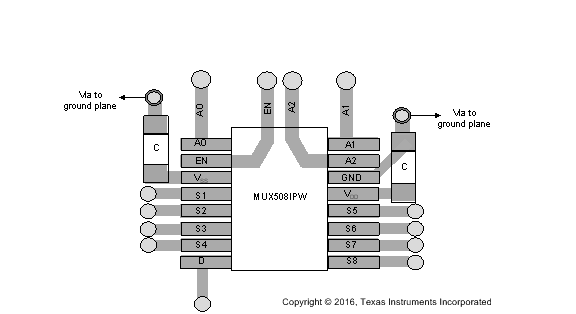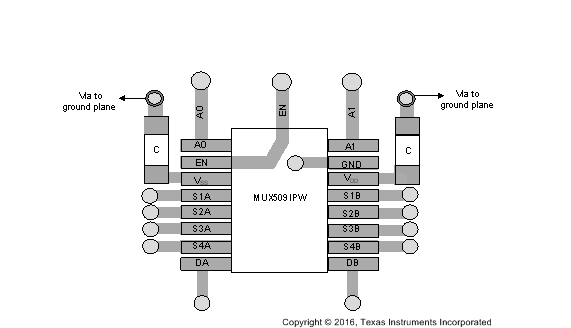ZHCSEV2C January 2016 – September 2016 MUX508 , MUX509
PRODUCTION DATA.
12 Layout
12.1 Layout Guidelines
Figure 45 shows an example of a PCB layout with the MUX508IPW, and Figure 46 shows an example of a PCB layout with MUX509IPW. The guidelines provided in this section are also applicable to the SOIC MUX508ID and MUX509ID package variants as well.
Some key considerations are:
- Decouple the VDD and VSS pins with a 0.1-µF capacitor, placed as close to the pin as possible. Make sure that the capacitor voltage rating is sufficient for the VDD and VSS supplies.
- Keep the input lines as small as possible. For the MUX509 differential signals, make sure the A inputs and B inputs are as symmetric as possible.
- Use a solid ground plane to help distribute heat and reduce electromagnetic interference (EMI) noise pickup.
- Do not run sensitive analog traces in parallel with digital traces. Avoid crossing digital and analog traces if possible and only make perpendicular crossings when necessary.
12.2 Layout Example
 Figure 45. MUX508IPW Layout Example
Figure 45. MUX508IPW Layout Example
 Figure 46. MUX509IPW Layout Example
Figure 46. MUX509IPW Layout Example